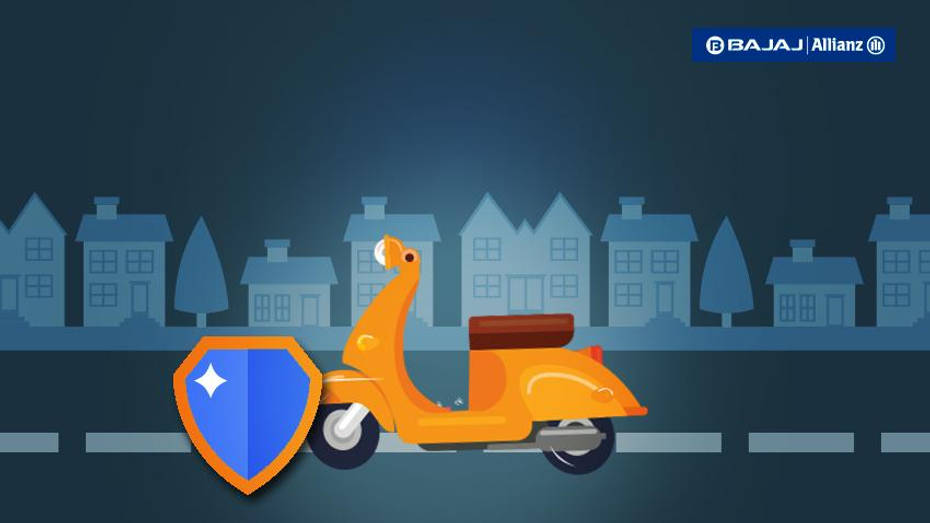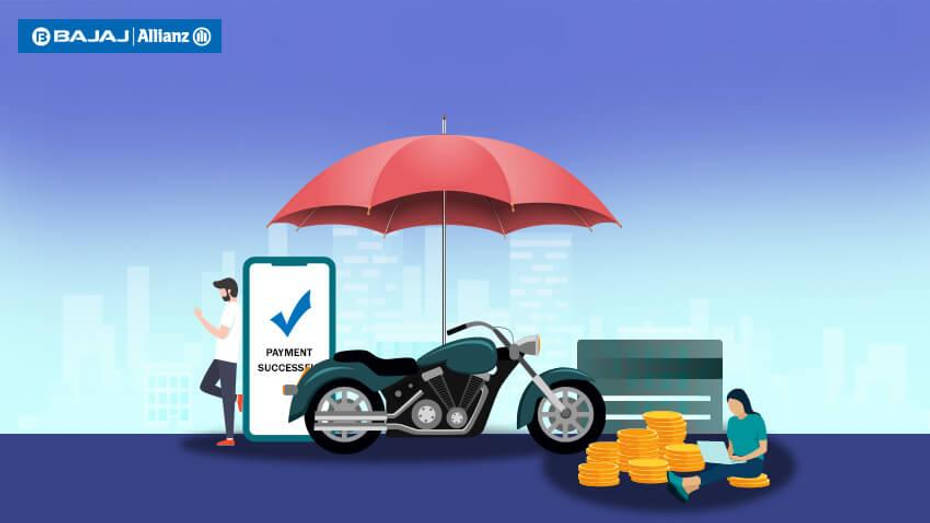
Bajaj Chetak 35 Range: Variants Explained
- Dec 24, 2024
- Views : 459


Easy to slip through traffic snarls, while being cheap to maintain looking at today’s rising petrol prices – there’s no gainsaying that a two-wheeler is the best choice for India. But there’s another aspect of two-wheelers we rarely look at: insurance.
And that’s where we step in. In this article we will give you a clearer picture of Insured Declared Value or IDV, a central focus of your vehicle’s insurance process, so that you can be rest assured you're getting the best deal the next time you renew your insurance.
What is IDV exactly?
Insured Declared Value (IDV) is the current market value of your two-wheeler. Essentially, it is the amount agreed by you and the insurance provider as the value of your bike before the policy agreement is signed upon by both parties. *
Why is IDV important?
The IDV of your bike is the maximum amount the insurance company will compensate you in case of total damage or theft. The amount you will pay as the bike insurance premium also depends on the agreed IDV of your bike.
So, in a sense, a comprehensive policy with the accurate IDV of your bike will provide you with maximum financial protection in the worst-case scenario.
Now, before we proceed, the ‘accurate’ IDV refers to the right value of your bike and is determined by factoring in the make and model of the bike, along with its age, for an estimate of depreciation. This gives us a clearer estimate of the premium you’ll need to pay. *

Factors that affect IDV
Since vehicles are in essence depreciating assets, their IDV, too, reduces with time. The IDV of your bike depends on:
● The city you’ve registered your bike in *
● Age of your bike *
● Ex-showroom price of your bike *
● Type of bike insurance policy *
● Insurance policy period *
When you look for insurance online, the parameters above are directly computed by the insurer. This means that while the IDV of a brand new bike can be as much as 95% of its ex-showroom price, it may go down by about 50% by the time the bike is five years old. *
Why the correct IDV is important
As mentioned before, the premium amount you pay depends on the IDV. So technically, you can choose a lower IDV for reduced premiums. However, this may lead to you incurring additional costs in case of total damage or theft. On the flip side, a higher IDV may theoretically assure higher compensation in case of total damage or theft, but it also means you’ll need to pay higher premiums. But that’s not all: you may still not get as high an amount when compensated, chiefly because your two-wheeler’s age and depreciation will also be considered when finalising the claim. *
Summing up…
Insurance is one of the few things we pay for that we wish we may never need to two wheeler insurance claim. That said, selecting the right IDV for your bike when insuring your bike (or when renewing said insurance) will not only get you the right value for your money, but also soften the blow during a worst-case scenario. *
* Standard T & C Apply.
Insurance is the subject matter of solicitation. For more details on benefits, exclusions, limitations, terms and conditions, please read sales brochure/policy wording carefully before concluding a sale.

Bajaj Chetak 35 Range: Variants Explained

Bajaj Chetak 35 Range: Colours Explained

Updated Bajaj Chetak Spotted Testing, Might Have An Orange Connect

A Quick Glimpse Of All The Two-wheelers Launched Last Month

VinFast Introduced VF 8 SUV In India At The Auto Expo 2025

VinFast VF3 Showcased At The Auto Expo 2025! Here Is A Closer Look At...

Bharat Mobility Global Expo 2025 Day 1 Wrap Up: All You Need To Know

Skoda Introduces Elroq SUV To India At The Bharat Mobility Global...

TVS Apache RTX 300 Adventure Bike Unveiled At Auto Expo 2025
 Mahindra BE 6
Mahindra BE 6
 Mahindra XEV 9e
Mahindra XEV 9e
 Hyundai Creta Electric
Hyundai Creta Electric
 MG Windsor EV
MG Windsor EV
 Tata Curvv EV
Tata Curvv EV
India's largest automotive community
 BMW Launches New-gen X3 In India At Auto Expo 2025 At Rs 75.8 Lakh
BMW Launches New-gen X3 In India At Auto Expo 2025 At Rs 75.8 Lakh
 BMW Motorrad Launches The R 1300 GS Adventure & S 1000 RR At Auto Expo 2025
BMW Motorrad Launches The R 1300 GS Adventure & S 1000 RR At Auto Expo 2025
 New Mini Cooper S John Cooper Works Pack Introduced At Auto Expo 2025
New Mini Cooper S John Cooper Works Pack Introduced At Auto Expo 2025
 Wraps-off VinFast VF7 At The Auto Expo 2025! Here Is A Detailed Look At The Electric SUV
Wraps-off VinFast VF7 At The Auto Expo 2025! Here Is A Detailed Look At The Electric SUV
 Mahindra BE 6
Rs. 18.90 Lakh
Mahindra BE 6
Rs. 18.90 Lakh
 Mahindra XEV 9e
Rs. 21.90 Lakh
Mahindra XEV 9e
Rs. 21.90 Lakh
 Hyundai Creta Electric
Rs. 17.99 Lakh
Hyundai Creta Electric
Rs. 17.99 Lakh
 MG Windsor EV
Rs. 13.99 Lakh
MG Windsor EV
Rs. 13.99 Lakh
 Tata Curvv EV
Rs. 17.49 Lakh
Tata Curvv EV
Rs. 17.49 Lakh